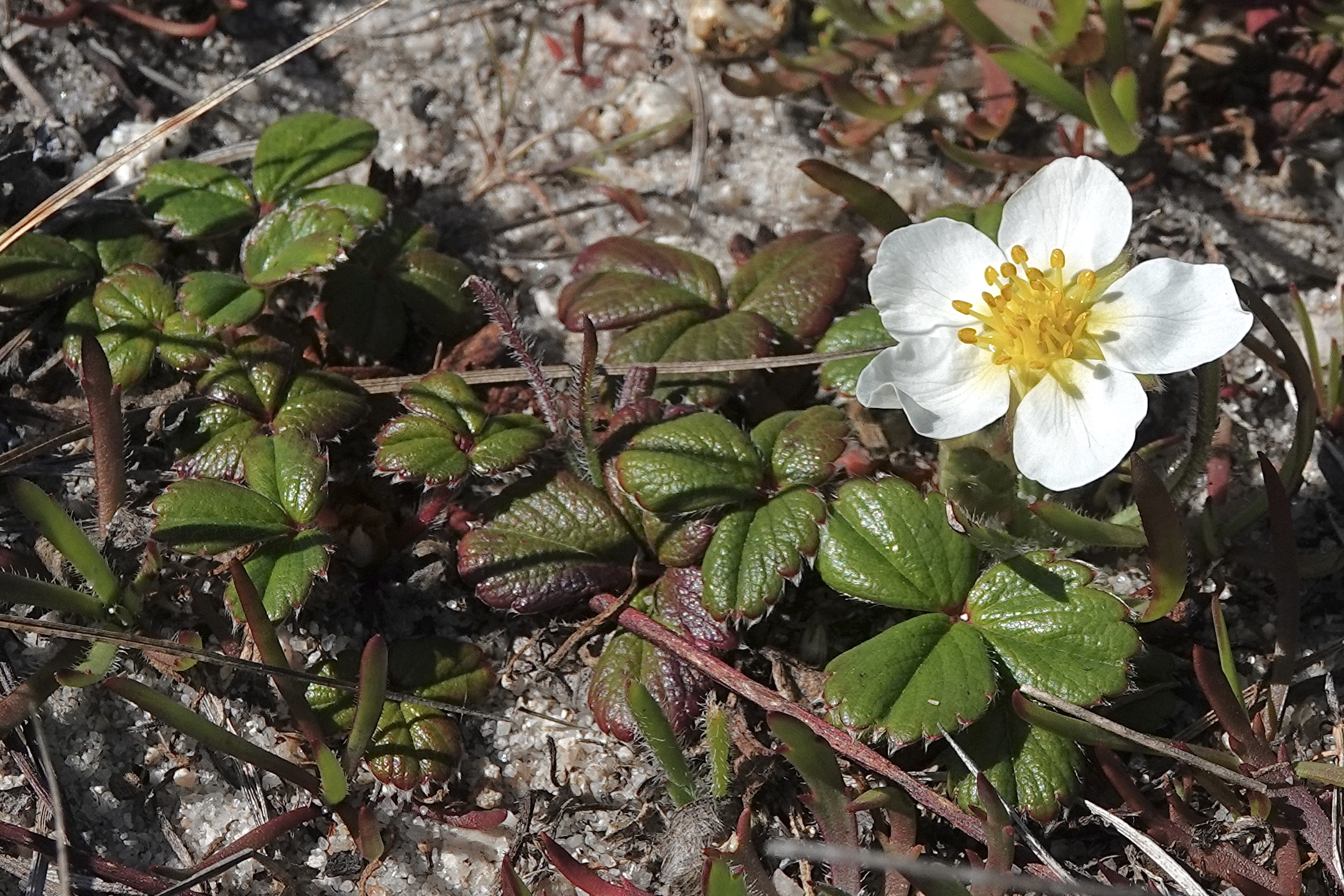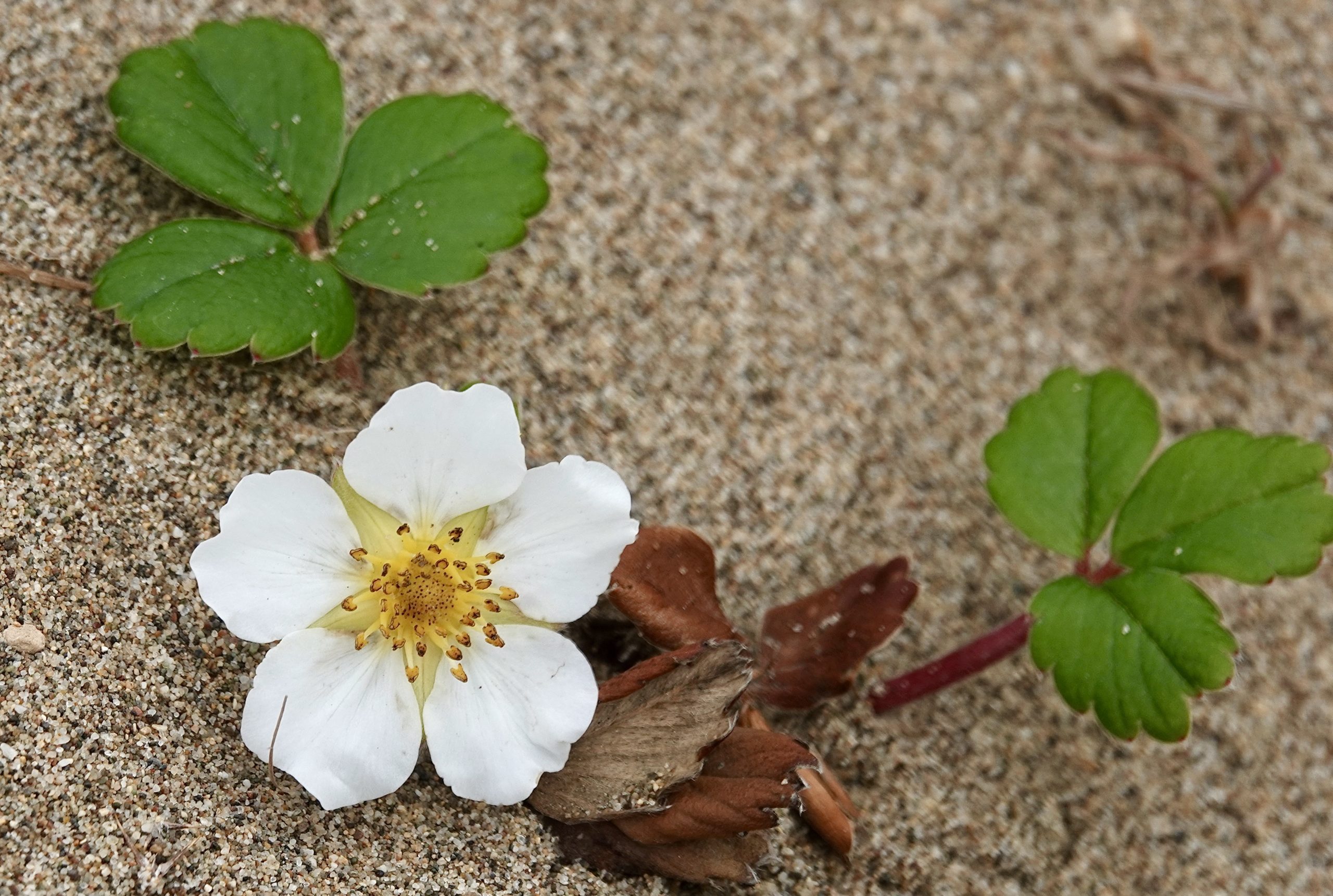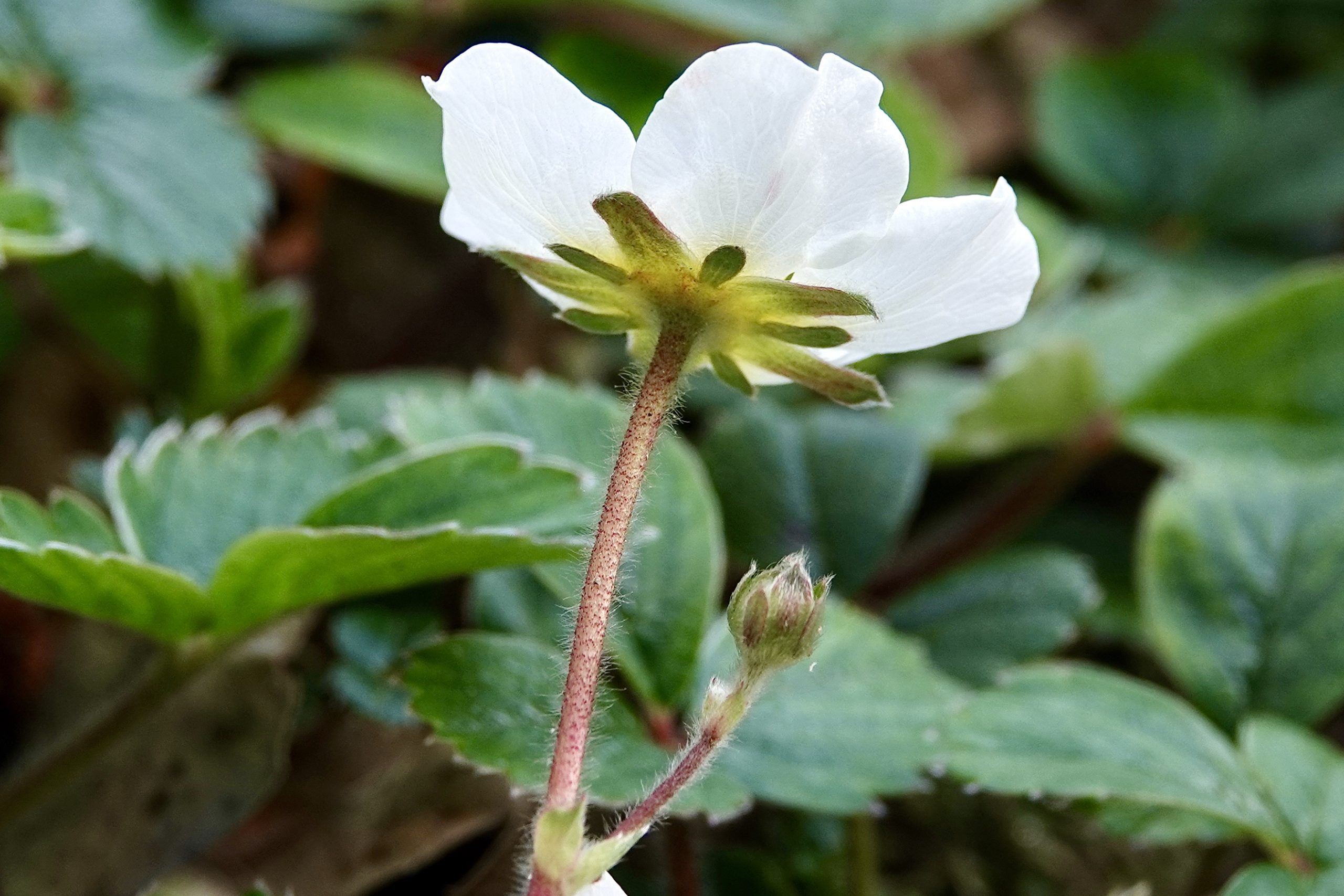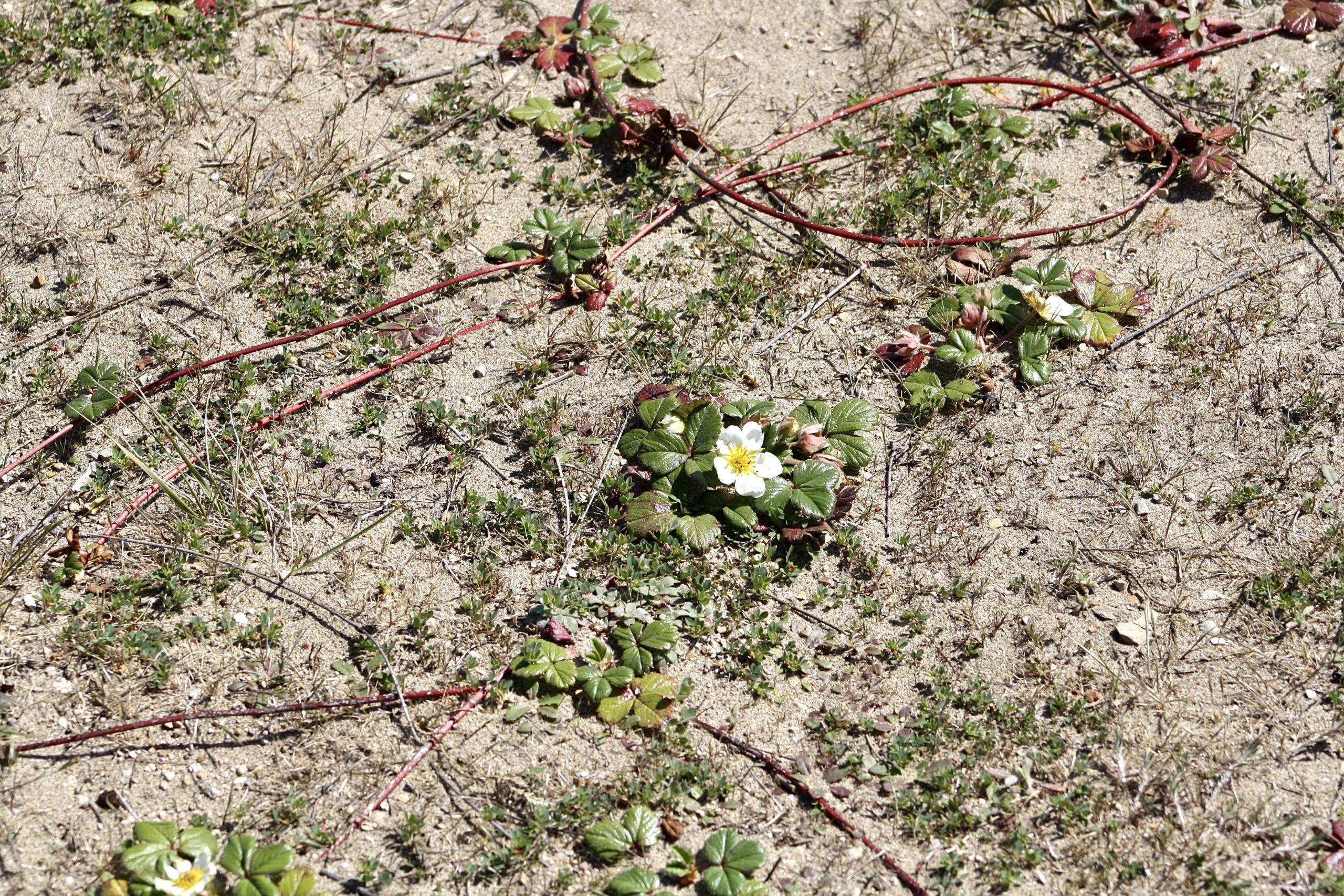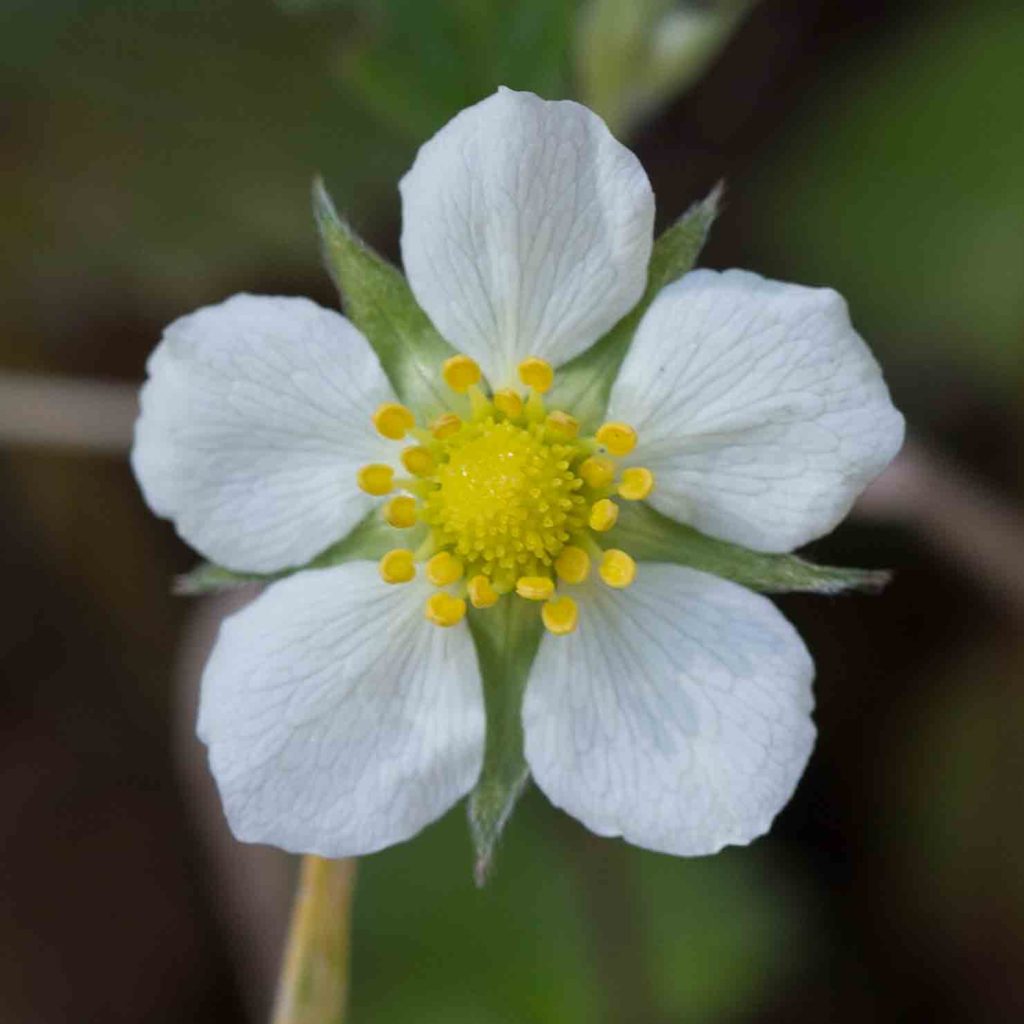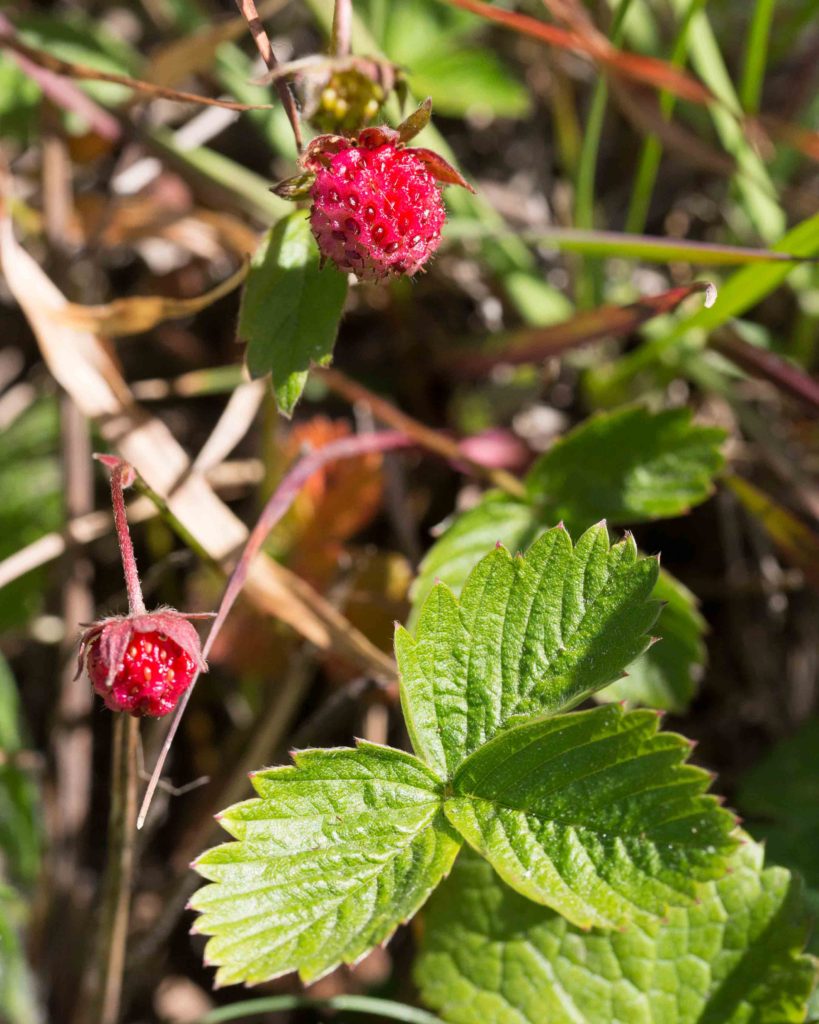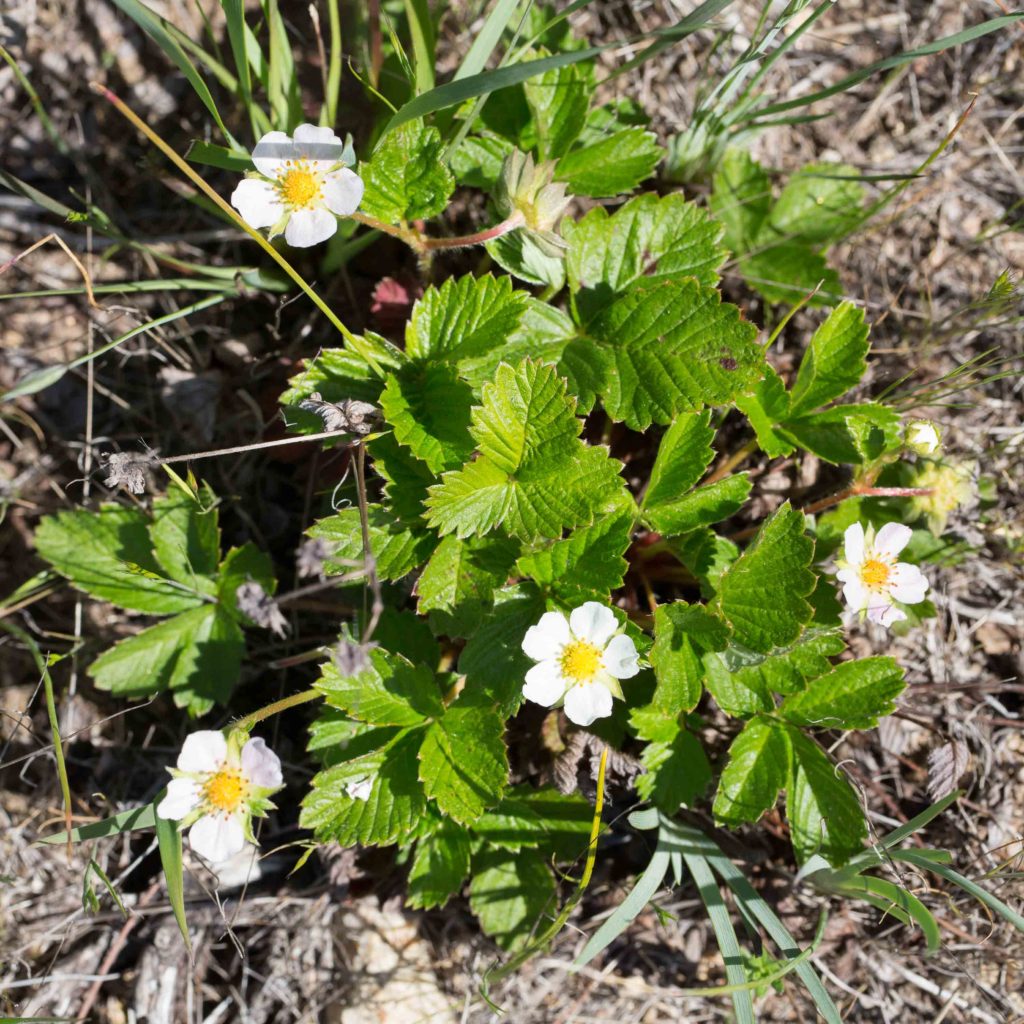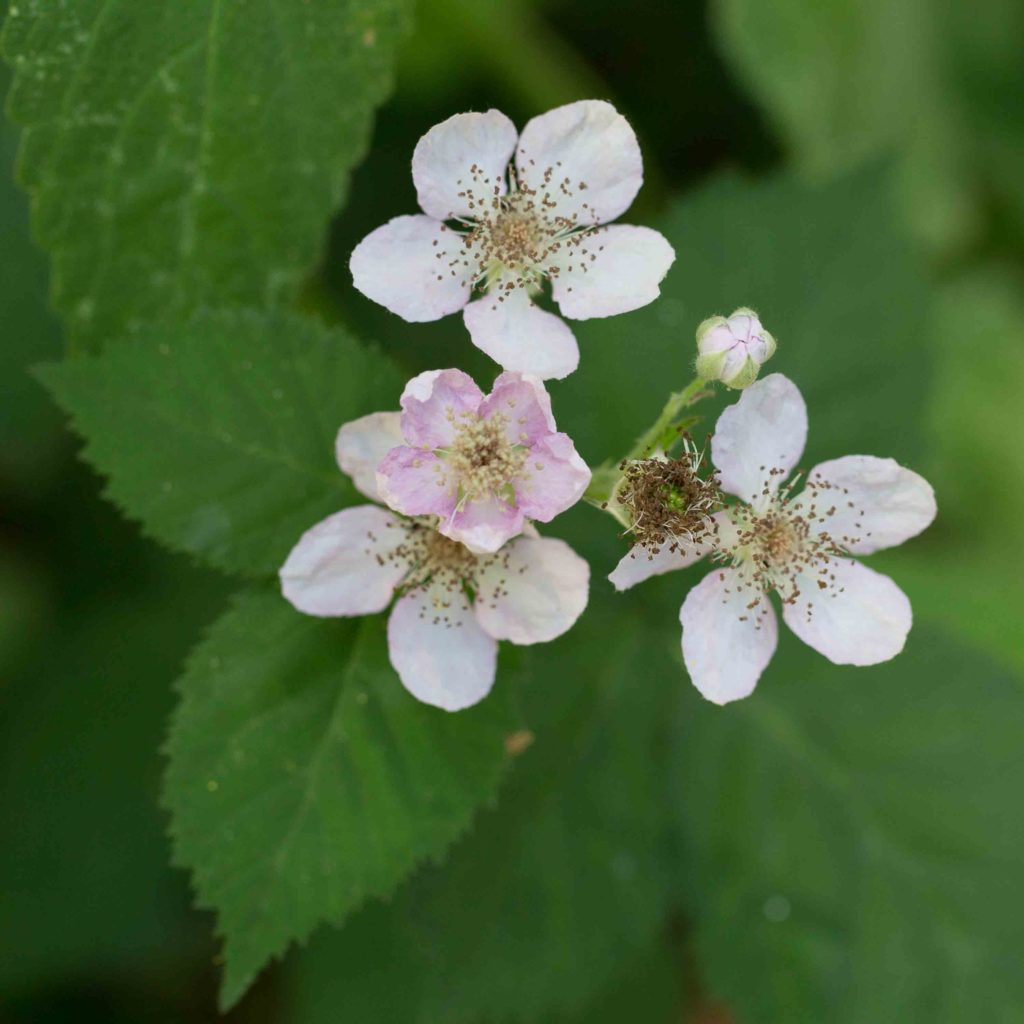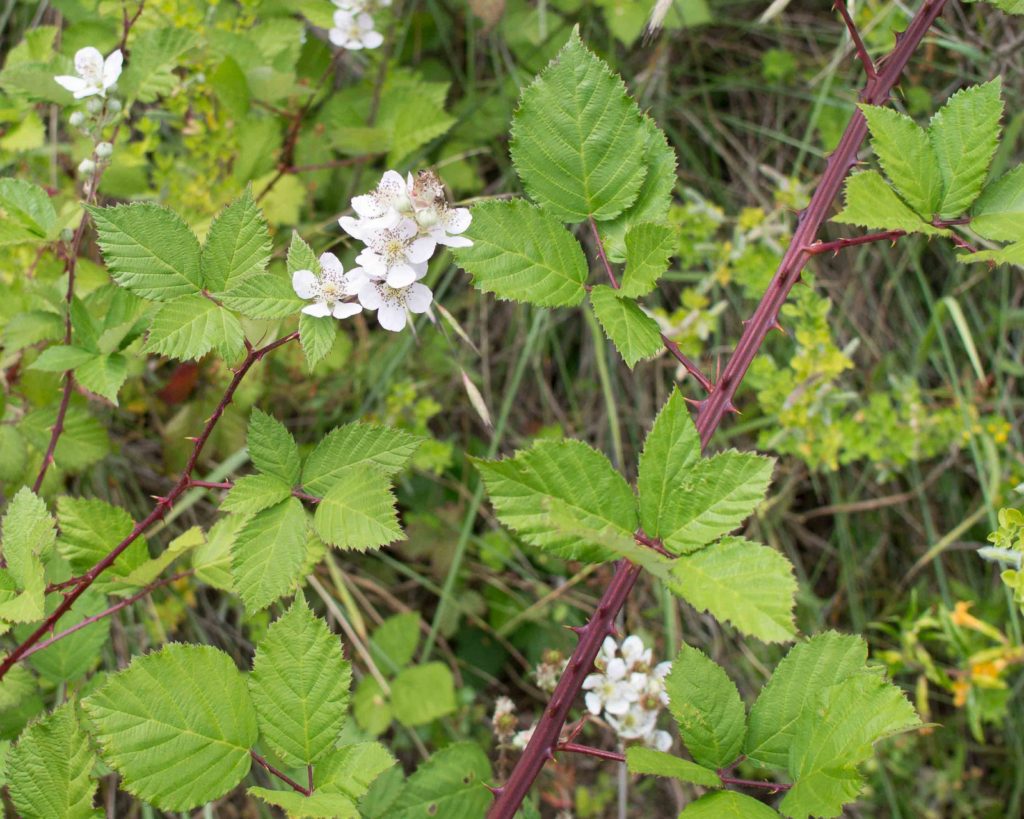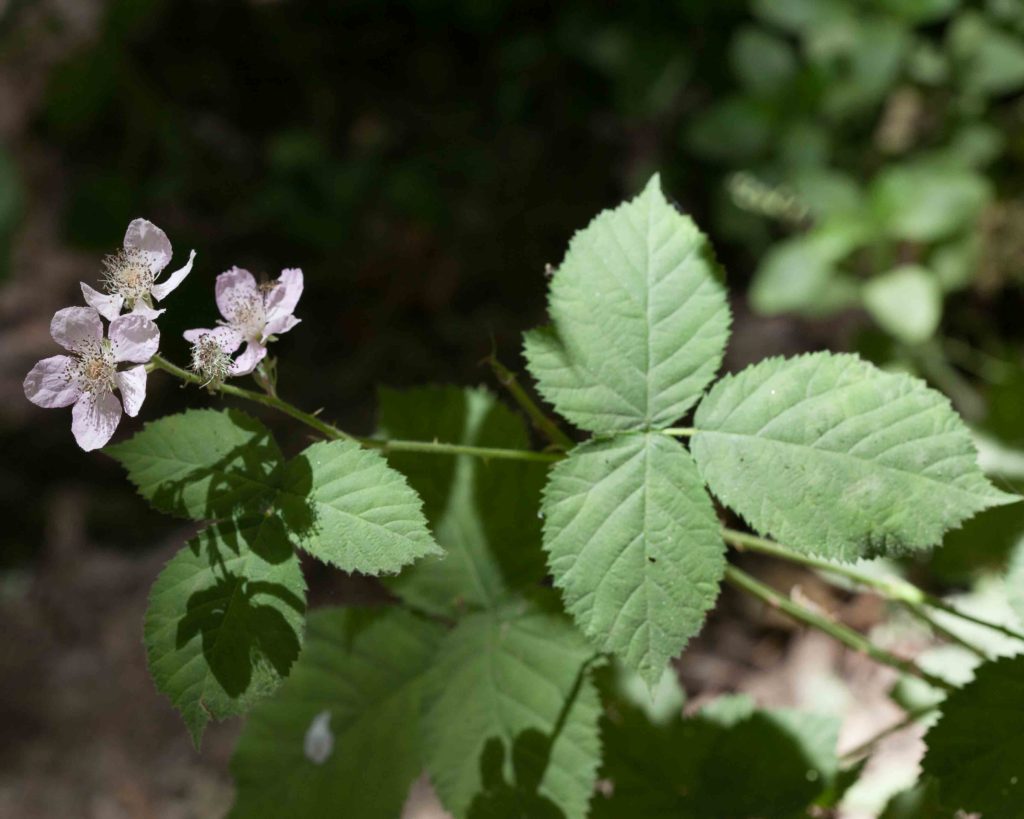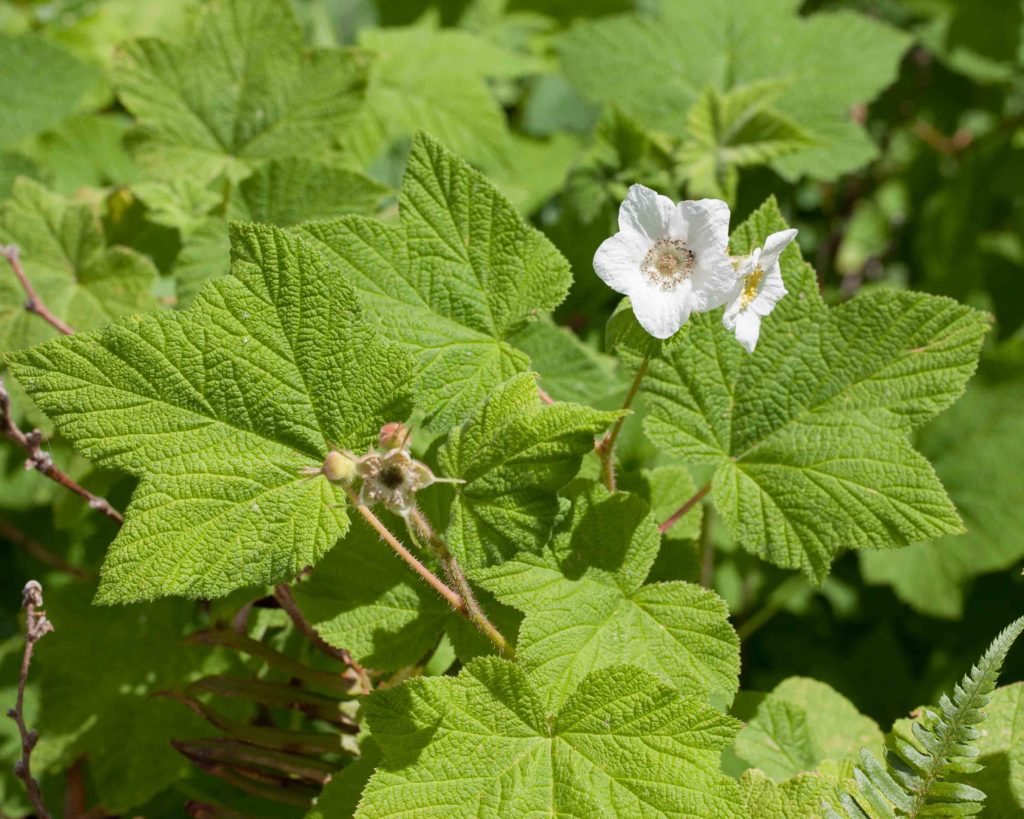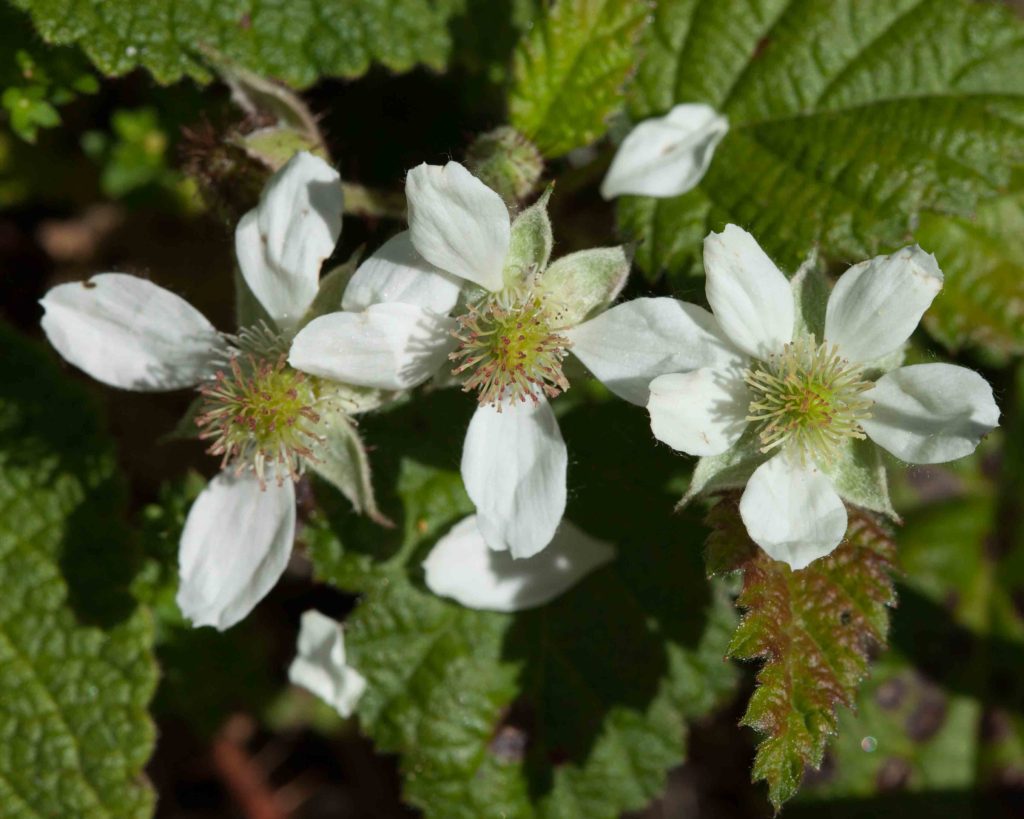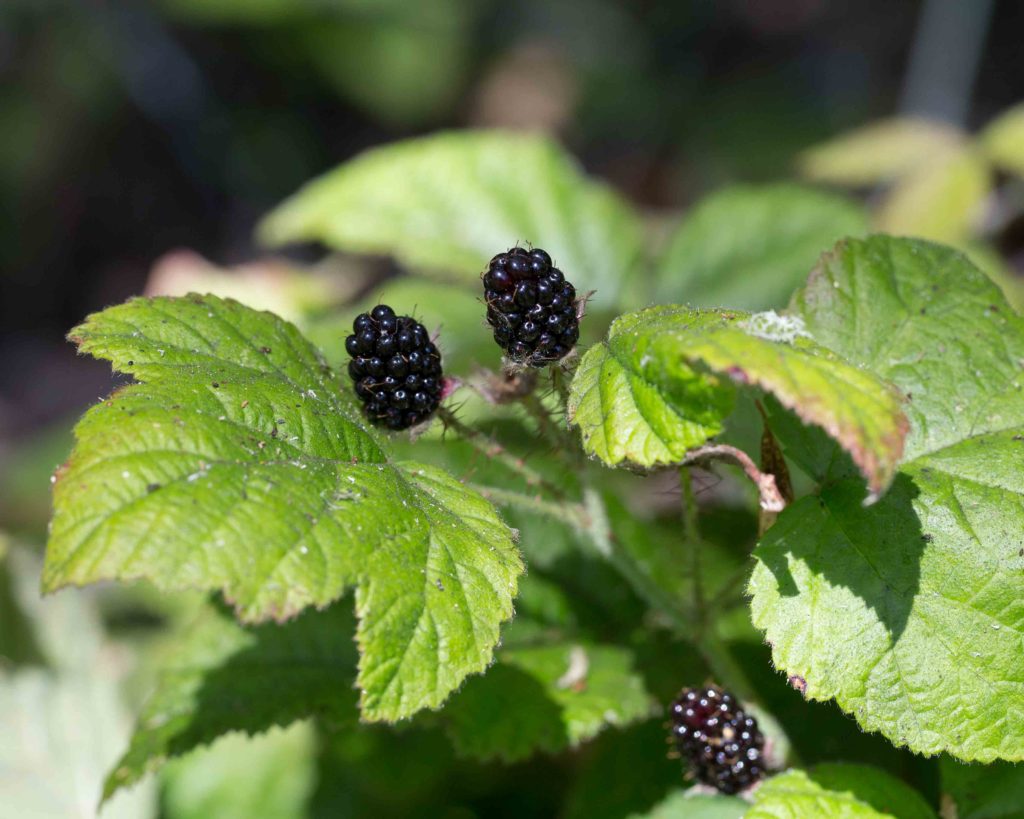Rosaceae: Rose Family — Strawberry, Blackberry & Thimbleberry
Plants in the Rose family include many of our best-loved ornamentals and fruits. The flowers usually have 5 petals, 5 sepals and numerous stamens, attached to a saucer- or bowl-shaped hypanthium. Often the oval leaves are toothed, and there is a stipule at the petiole base. This page shows strawberries (genus Fragaria) and the blackberry group (genus Rubus). The fruits in the Rubus genus are divided into “blackberry-type” (the receptacle comes away with the fruit when it is picked) and “raspberry-type” (the fruit separates easily from the receptacle when picked). The difference is immediately apparent, even in store-bought fruit.
Beach Strawberry – Fragaria chiloensis
Blooms:
Feb–Nov
Plant Height:
stems 5 – 20 cm
Flower Size:
Medium
Origin:
Native
Habitat:
Coastal grasslands and lower dunes
Notes:
Similar to Wood Strawberry, but with larger flowers and fruits. Petals are white or pinkish, 10-18 mm, much longer than sepals. Leaves are thick and leathery, dark green above with prominent veins, and densely hairy underneath. Leaf edges are often curled under. Stems are hairy. This plant spreads by reddish horizontal runners (see last photo). Fruits 1-2 cm. This species is often dioecious, and may be used as groundcover in coastal areas. Photos by CJH.
Wood Strawberry – Fragaria vesca
Blooms:
Jan–July
Plant Height:
3–15 cm
Flower Size:
Medium
Origin:
Native
Habitat:
Shaded, moist places
Notes:
This plant needs little comment, other than to say that the fruits make up in flavor for what they lack in size. The leaves are divided into 3 thin leaflets. The flowers are white, or occasionally pink-tinged.
Himalayan Blackberry – Rubus armeniacus
Blooms:
Mar–June
Plant Height:
Stems < 3 m
Flower Size:
Medium
Origin:
Eurasia
Invasive?
Yes – high
Habitat:
Woods and damp places, disturbed areas
Notes:
This is similar in appearance and habit to Calilfornia Blackberry (Rubus ursinus, see below). But it has much fatter stems, and leaves which are white-tomentose beneath. The stem is pentagonal in cross-section rather than round, and is especially noticeable on older stems. Leaves are also slightly different in shape, more obovate than spade-shaped. Prickles are stout, straight or curved, with a broad base.
Thimbleberry – Rubus parviflorus
Blooms:
Mar–Aug
Plant Height:
1–2 m
Flower Size:
Large
Origin:
Native
Habitat:
Shaded places, especially near water
Notes:
This common shrub has an odd scientific name, since “parviflorus” means small-flowered, yet its flowers are larger than any of the other members of its genus found in California. Its large pure white flowers have petals that are 14–22 mm long. The stems have no prickles. The leaves are large, soft and palmately-lobed. The delicious fruit is like a rather flat raspberry. Photos #3 – 4 by CJH.
California Blackberry – Rubus ursinus
Blooms:
Mar–July
Plant Height:
Stems < 2 m
Flower Size:
Medium
Origin:
Native
Habitat:
Woods and damp places, disturbed areas
Notes:
A very common, aggressively rambling shrub, with round prickly stems. The plant is generally dioecious, male flowers (first photo on left) and female flowers (second photo) are borne on separate plants. The flowers typically have 5 petals, but multiple-petaled forms are occasionally found. Leaves are simple or compound, in 3s, rough and coarse-toothed. Fruits are edible (from female bushes only — for obvious reasons).
